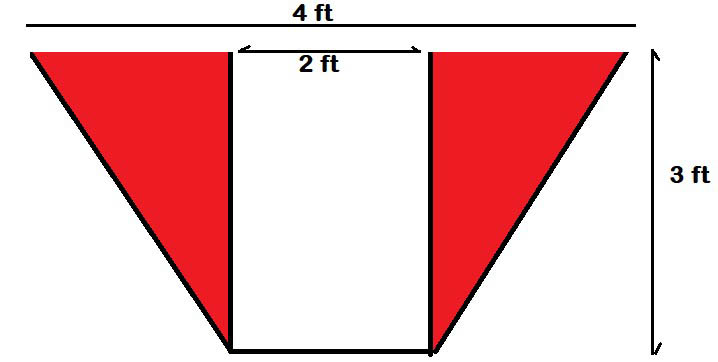Dear Editor,
I must question the square concrete drains which seems to be the new standard of drain design we are building all over Georgetown. The previous wider drains, with sloping sides, which flooded in any rainfall exceeding 2 inches in 24 hours, was designed by the Dutch for this very heavy rainfall country with below sea level land on the coast. So a 3 ft deep drain with a 2 ft wide bottom would have a top of 4 ft. Such a drain would have a cross section profile of 12 sq ft, whilst a square drain which is 3 ft. deep with a 2 ft bottom would have a cross sectional profile of roughly 6 sq ft, creating a 100% less water holding capacity! This is just an example for ease of explaining. If the coastal plain was above sea level and the run off from the rainfall was going on 24 hours per day, these concrete square drains may be adequate. But since we are a very high rainfall country below sea level, our drains have to have a specific design based on the fact that the coastal plain can only actually drain between 8 to 12 hours per day during low tide, and so must act not only as a drain for run off, but as a drain with catchment capacity of rainwater to allow quick runoff to the ocean when the kokers do finally open.
One must ask if enough engineering scholarship has been given due to the fact that these drains in Guyana are supposed to hold water so that when the kokers open it can run out to the Atlantic. Also our coastal soil is a very heavy clay which allows for very slow lateral movement of water, so how will our yard water properly enter those concrete structures outside?? This country is supposed to have a Guyana Association of Professional Engineers [GAPE]. This association is conspicuously silent on this and other major issues of engineering. For example, in addition to the square drains, who decided that it was ok to have these monster 50-ton trucks, which seemed to be even more aggressive than the taxis and mini buses on our roads, and which don’t obey the speed limits and equipped with flashing lights, to tell the rest of us to get the hell out of the way. They continue to terrorize the nation. How many of us have to be traumatized or even killed before the authorities do something?
In addition, these trucks are much too heavy for our roads and have great difficulty negotiating off our highway unto very narrow roads and bridges in villages like Prashad Nagar and Kitty etc. where I live; also, they are doing enormous damage to our asphalted roads built on muddy substrata with very little heavy duty foundations to support such massive loads. I was in Trinidad recently and I did not see one such vehicle. A few days ago, there was a 50-ton truck on Ganges St. Prashad Nagar doing nearly 40 MPH! Has everyone in this country gone completely insane? What’s a highway maintenance truck doing racing through Prashad Nagar? And have all Guyana’s engineers migrated? Or are they too busy sucking up for contracts? Or have they been terrorized into silence, and so are overlooking their function to police these and other public works which could adversely affect us, Guyanese?
In the face of a shortage of skilled labour and managers, which even the government admits exists, what’s the reason for borrowing more money for more contracts? Perhaps the income to the boys from the contracts overrules the good sense of slowing construction expansion, to allow skills and money to catch up with the works so that Guyanese can at least end up with something of quality in infrastructure on the ground. There is now no question that there is corruption in the awarding of these contracts, let’s say as a reasonable ‘guesstimate’ that 30% is gobbled up by corruption, kickbacks, including giving these contracts to poorly qualified contractors, with very poorly skilled workers, and are not supervised properly by the authorities. The evidence is everywhere that this is the case here.
I have absolutely no confidence that the National Drainage and Irrigation Authorities [NDIA] in this country possess competent engineers, who we can trust to make these changes to the profile of our drains in Georgetown, and have not presented one iota of informed engineering explanation as to how it will affect our drainage system and allow the normal citizens to understand and not be worried that their property could be in some danger as a result of this new policy, and the solid engineering criteria, which have prompted us to take these, what appears to me, to be wrong policy.
Sincerely,
Tony Vieira






